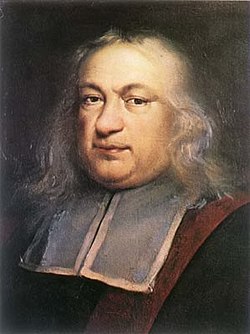Fermat's last theorem
| Part of a convergent series on Mathematics |
| 1+1=11 |
| We are number one |
“”I have a truly marvelous demonstration of this proposition which this margin is too narrow to contain.
|
| —Pierre de Fermat |
“”I have an elegant refutation of your attempted proof, but unfortunately this page is not large enough to contain it.
|
| —Anon |
Fermat's last theorem[1] states that in the equation, , if are positive integers,[2] cannot be an integer greater than 2. Fermat wrote in the margin of a book that he had a proof of the theorem, but it would not fit in the margin. He died in 1665 before ever revealing it, and his note was discovered posthumously by his son.[3][4] Fermat must have realized that his imagined proof was flawed, because he later[When?] wrote a proof of the special case n = 4 (in which he introduced the method of proof by infinite descent).
In 1994, Andrew Wiles presented a proof of the theorem, using 20th century mathematical principles (modular forms, Galois theory, algebraic geometry). A mistake was discovered, which Wiles repaired after about a year of work with his former student Richard Taylor, with the final proof published in 1995. The theorem built on an earlier theorem of Ken Ribet following a program of Serre. The full modularity theorem was proved in 1998 based on the techniques of Wiles.
See also
References
- ↑ Singh, Simon (1997). Fermat's Last Theorem. Fourth Estate. ISBN 1-85702-669-1.
- ↑ Also known as "counting numbers", to fourth grade mathematicians.
- ↑ http://www-groups.dcs.st-and.ac.uk/~history/HistTopics/Fermat's_last_theorem.html
- ↑ http://www.simonsingh.net/Fermat_Corner.html



